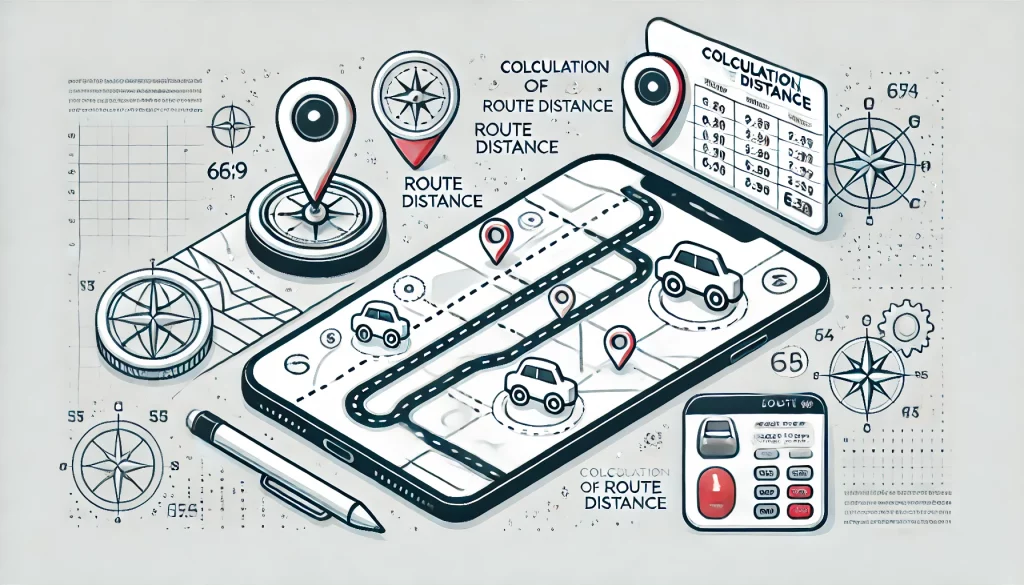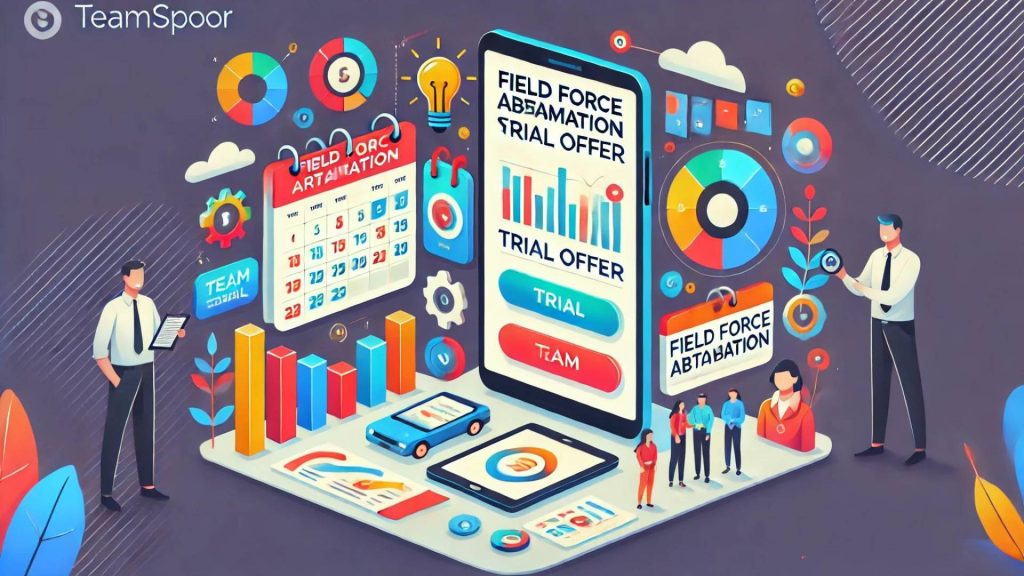
In the modern workforce, managing and calculating employee conveyance can be a daunting task. With advancements in technology, there are several ways to streamline and automate this process, making it more efficient and accurate. This article explores different methods of calculating conveyance for employees, including manual distance traveled sheets, GPS devices, mobile GPS, and map-based distances via Google Maps. We will also discuss the pros and cons of each method to help you choose the best solution for your organization.
1. Manual Distance Travelled Sheet
Manual distance traveled sheets involve employees recording their travel distances by hand, usually at the end of each day or week.
Pros:
- Simplicity: Easy to implement without needing any special tools or technology.
- Low Cost: No additional expenses for software or devices.
- Customizable: Can be tailored to specific company needs and formats.
- Control: Employers can easily verify and audit the records.
- Adaptable: Can be used in areas with no GPS or mobile network coverage.
Cons:
- Human Error: Prone to mistakes and inaccuracies in recording distances.
- Time-Consuming: Employees need to spend time filling out the sheets.
- Manipulation: Potential for intentional falsification of data.
- Inefficiency: Manual calculations can slow down the reimbursement process.
- Record Keeping: Managing and storing paper records can be cumbersome.
2. GPS Device
Using dedicated GPS devices in company vehicles to track and calculate distances traveled.
Pros:
- Accuracy: Provides precise measurements of distances traveled.
- Automation: Reduces the need for manual entry and calculation.
- Real-Time Tracking: Allows for live monitoring of vehicle locations.
- Data Analysis: Facilitates detailed analysis of travel patterns.
- Accountability: Reduces the likelihood of falsified records.
Cons:
- Cost: Initial investment in GPS devices can be high.
- Maintenance: Requires ongoing maintenance and updates.
- Privacy Concerns: Employees might be uncomfortable with constant tracking.
- Complexity: May require training for employees to use the devices effectively.
- Signal Issues: GPS devices may not work well in certain areas with poor satellite coverage.
3. Mobile GPS
Leveraging the GPS functionality of employees’ smartphones to track and calculate travel distances.
Pros:
- Convenience: Most employees already carry smartphones.
- Cost-Effective: No need for additional hardware investment.
- Flexibility: Can be used anywhere, not limited to company vehicles.
- Integration: Can be integrated with mobile apps for easy data collection.
- Real-Time Data: Provides instant access to travel data.
Cons:
- Battery Drain: Continuous GPS use can drain smartphone batteries quickly.
- Privacy Issues: Employees might be concerned about being tracked outside work hours.
- Data Usage: May consume significant amounts of mobile data.
- Accuracy: GPS accuracy can vary based on the environment and phone quality.
- Security: Potential risk of data breaches and unauthorized access to location data.
4. Map-Based Distance via Google Maps
Using Google Maps to calculate distances based on predefined routes.
Pros:
- User-Friendly: Intuitive and easy to use for both employers and employees.
- Accurate Routing: Provides accurate and up-to-date routing information.
- No Hardware Required: No need for additional devices or equipment.
- Integration: Can be integrated with other software systems for seamless data transfer.
- Cost-Effective: Generally free or low-cost to use.
Cons:
- Internet Dependency: Requires a stable internet connection to function properly.
- Manual Input: Employees may need to input start and end points manually.
Save Cost With TeamSpoor’s Route Distance Calculator
To calculate route distance, TeamSpoor offers multiple options depending on the requirements of the organization.
For example, if an organization wants to get an estimated distance traveled by their employees, they can use the free estimated route distance traveled report from the panel. This report should not be used to pay conveyance to the employees, as it only provides a vague estimate of the distance traveled during their check-in (working hours) period. It has the lowest battery consumption.
The second option offered by TeamSpoor is the InstaTrack-based distance calculator. It provides a fairly accurate distance traveled by the employee during working hours; however, the battery consumption is very high due to constant GPS access. This method is also prone to errors, especially when GPS signals are not available, such as during the monsoon season or in hilly areas. Sometimes, employees themselves keep the GPS off, unaware that this will affect the distance recorded. Another drawback of this method is that it records the total distance traveled, even if the employees are traveling for non-official purposes, such as detours or personal errands.
The third option is RDC, a dedicated feature for calculating route distance based on maps like Google, TomTom, etc., which provides the accurate distance between two points and the travel time based on current traffic conditions. This method gives the most accurate distance between two points when traveling by car, avoiding all traffic jams. This way, even if your employees take a detour for personal tasks, you will only be paying for the distance traveled for official work, as our report will ignore the actual path taken and provide the distance that should have been covered.
RDC credits can be purchased additionally through our sales team and work with any plan offered by us. You will be charged one credit for each visit marked by your field executives where the distance is required. You can switch it on or off based on your requirement.
Use Cases
Auto-calculation of route distance for employees can be utilized by a wide range of companies across various industries to enhance efficiency, accuracy, and accountability. Here are 5-10 use cases for different industries:
- Field Sales and Marketing:
- Pharmaceutical Companies: Track the distance traveled by medical representatives visiting hospitals and clinics.
- FMCG Companies: Monitor the routes of sales representatives distributing products to retail stores.
- Logistics and Transportation:
- Courier Services: Calculate the distance traveled by delivery personnel to optimize routes and manage fuel costs.
- Freight Companies: Track the movement of trucks and other vehicles for accurate billing and route optimization.
- Utilities and Maintenance:
- Utility Companies: Manage the travel routes of field technicians servicing electrical, water, or gas systems.
- HVAC Maintenance: Track the distance covered by service technicians attending to heating, ventilation, and air conditioning systems.
- Healthcare Services:
- Home Healthcare Providers: Calculate travel distances for nurses and caregivers visiting patients at home.
- Medical Equipment Suppliers: Track the delivery routes of equipment to hospitals and clinics.
- Construction and Engineering:
- Construction Firms: Monitor the movement of engineers and supervisors between various construction sites.
- Architectural Firms: Track site visits made by architects and project managers.
- Telecommunications:
- Telecom Service Providers: Manage the routes of field engineers maintaining and installing telecommunication networks.
- Internet Service Providers: Track the travel distances of technicians providing installation and maintenance services.
- Real Estate:
- Property Management Companies: Monitor the distance traveled by property managers overseeing multiple locations.
- Real Estate Agents: Calculate the travel distance for agents showing properties to clients.
- Government and Public Services:
- Municipal Services: Track the movement of inspectors and maintenance workers attending to public infrastructure.
- Emergency Services: Calculate the distance traveled by emergency response teams, such as fire and medical services.
- Retail and Distribution:
- Grocery Delivery Services: Monitor the routes of delivery personnel to ensure timely and efficient service.
- Furniture and Appliance Delivery: Track the distance traveled by delivery teams transporting large items to customers.
- Consulting Services:
- Business Consultants: Calculate travel distances for consultants visiting client offices.
- IT Service Providers: Track the movement of IT support teams providing on-site assistance to clients.
Conclusion
Choosing the right method to calculate conveyance for your employees depends on various factors, including your budget, the size of your workforce, and specific operational needs. Manual distance traveled sheets are simple and low-cost but prone to errors and inefficiencies. GPS devices offer accuracy and real-time tracking but come with higher costs and maintenance. Mobile GPS provides convenience and flexibility but raises privacy and security concerns. Map-based distance calculations via Google Maps are user-friendly and cost-effective but require internet access and manual input.
For more details on how to implement the solution for your company, please contact us from https://znicrm.com/c/teamspoor


